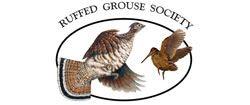Two RGS Publications Now Available On The Internet
Articles explain the importance of forest restoration.

Coraopolis, PA – -(AmmoLand.com)- In its continuing efforts to educate sportsmen and other conservationists on the importance of proper forest stewardship and the need for a diversity of both young forest and old forest species, the Ruffed Grouse Society (RGS) has made available two of its highly regarded publications in a PDF format.
In each of the articles, the authors skillfully explain in laymen’s terms and easily understood color graphics, what has happened to our forests and the wildlife species, both hunted and non-hunted, that depend on early successional stages of what will eventually become mature forests.
The first is a reprint of The Other Silent Spring: Disappearing Birds of Young Forests by Steven Backs, a wildlife research biologist, with the Indiana Fish and Wildlife Department of Natural Resources. The article was featured in the Summer 2009 edition of the Ruffed Grouse Society magazine.
In the article Back’s writes: “These three birds [the American woodcock, the ruffed grouse and the whip-poor-will]…are “coal mine canaries” telling us by their absence that young forest habitats are quickly disappearing. Are we listening? Do we hear the emptiness? Will we listen?’
The second is a new publication Placing Wildlife at Risk by Ignoring Ecological Principals: The Need to Manage Public Lands, by Dr. Michael Zagata, RGS Executive Director and CEO.
Its original format is a four-page tabloid size paper publication, in which Dr. Zagata references the “State of the Birds” report issued in 2009 by the North American Bird Conservation Initiative.
In a passage from the manuscript Dr. Zagata explains: “… many Eastern forest birds dependent on disturbed or early-successional forest or natural disturbance (including pine barrens) are suffering consistent and troubling declines. Those birds in decline include golden-winged warbler, whip-poor-will, prairie warbler, Eastern towhee, and field sparrow, and popular game species such as Northern bobwhite and American woodcock.”
The RGS urges every upland bird hunter, bird watcher and conservationist to take the time to learn the principals as they relate to the species we care so much about. Too often well meaning individuals and organizations favor mature trees over seedlings and saplings without understanding the consequences.
Both of these “must read” documents should be digested and the principals passed along by grouse and woodcock aficionados, bird watchers, conservationists and educators teaching others about nature.
A direct link to the Steven Backs article PDF is: www.ruffedgrousesociety.org/pdf/RGS_Summer09p40-42Sm.pdf . For the publication by Dr. Zagata the web address is: www.ruffedgrousesociety.org/pdf/PlacingWildlifeAtRisk.pdf .
For Internet distributions, both documents have been converted into a printable 8 1/2″ x 11″ PDF that can be downloaded and e-mailed to hunting partners, school ecology teachers and others.
About:
Established in 1961, the Ruffed Grouse Society is the one international wildlife conservation organization dedicated to promoting conditions suitable for ruffed grouse, American woodcock and related wildlife to sustain our sport hunting tradition and outdoor heritage.
Information on the RGS, its mission, management projects and membership can be found on the web at: www.ruffedgrousesociety.org.
